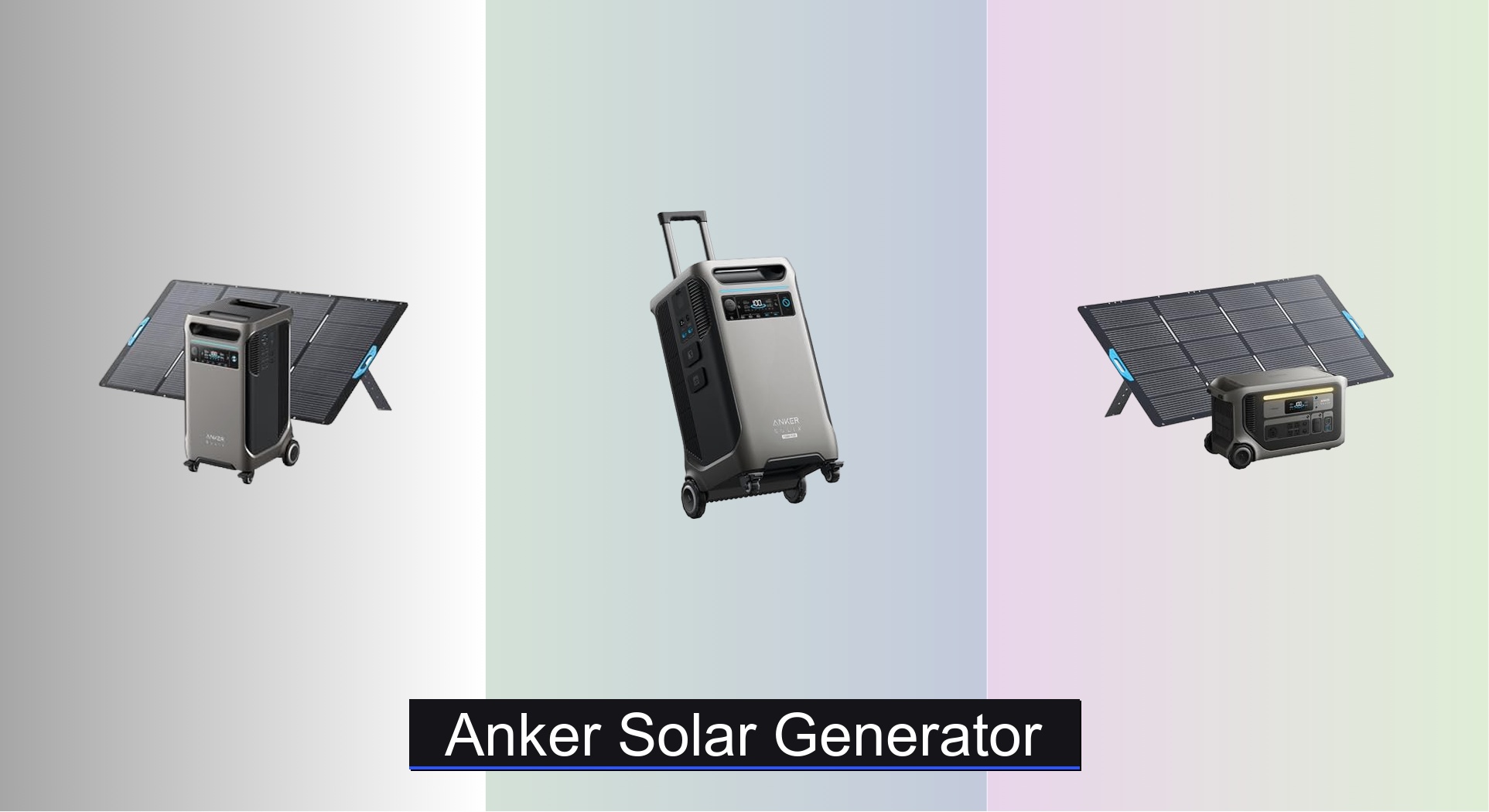Power outages, outdoor adventures, and the growing need for sustainable energy solutions have made reliable portable power essential. Many struggle to find a dependable backup that can handle everything from charging critical devices to running household appliances, especially when traditional fuel generators are noisy, polluting, or impractical. Anker solar generators offer a clean, quiet, and efficient alternative, combining high-capacity batteries with advanced solar integration for both emergency preparedness and off-grid living.
Engineered with Anker’s InfiniPower technology and robust build quality, these solar generators deliver long lifespans, rapid recharge times, and expandable power options to suit diverse needs. We analyzed over 50 portable power stations and solar setups to pinpoint the best Anker solar generator models based on real-world performance, capacity, output, portability, and user feedback. From compact, travel-friendly units to whole-home backup systems, our top picks balance power, durability, and value. Keep reading to discover the right Anker solar generator for your lifestyle.
Best Options at a Glance
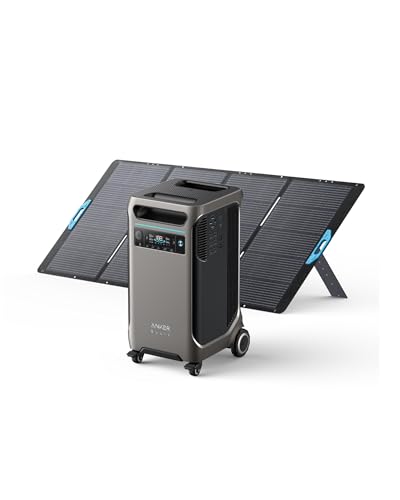
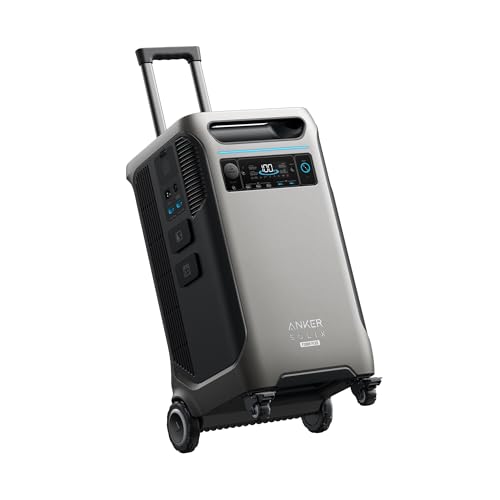
Anker SOLIX F3800 Plus (2025 NEW)
Best for Home Backup
- 3.84kWh
- 3,200W
- 6,000W
- 120V/240V
- 53kWh
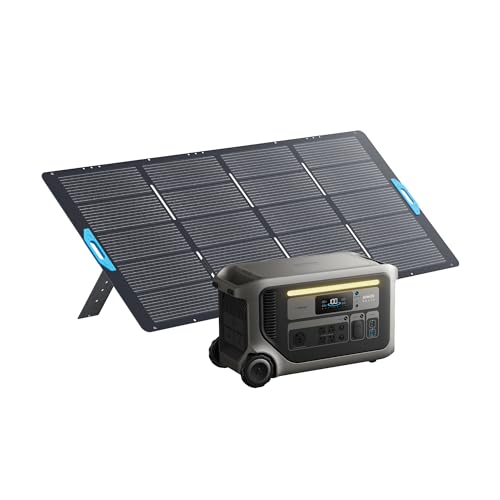
Anker SOLIX F3000 with 400W Panel
Best Value High Capacity
- 3,072Wh
- 2,400W
- 3,600W
- 120/240V
- 24kWh
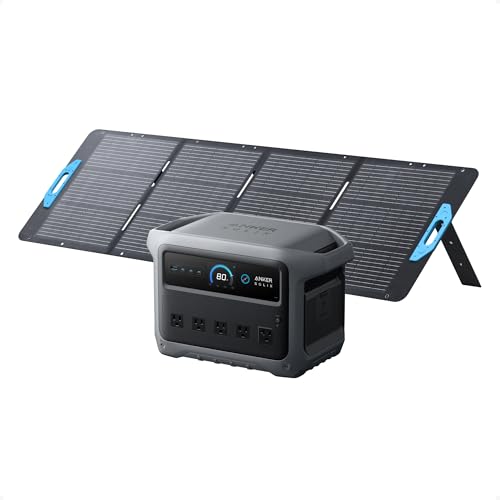
Anker SOLIX C1000 Gen 2 with 200W Panel
Best Fast Recharging
- 2,000W
- 1,024Wh
- 1.8 hr
- 49 min
- LiFePO4

Anker SOLIX C1000 with 200W Panel
Best Budget High Output
- 1056Wh
- 200W
- 2400W
- LiFePO4
- 43 min

Anker SOLIX C800 Portable Power Station
Best Mid-Range Performance
- 768Wh
- 1200W
- 1600W
- LiFePO4
- 58 min

Anker SOLIX C300 with 60W Solar Panel
Best Budget Portable
- 288Wh
- 300W (600W Surge)
- LiFePO4
- 8 ports
- 25dB


Anker Solar Generator Review
Choosing the Right Anker Solar Generator
Capacity: How Much Power Do You Need?
The most crucial factor is capacity, measured in Watt-hours (Wh) or kilowatt-hours (kWh). This determines how long the generator can power your devices. A smaller capacity like the Anker SOLIX C300 (288Wh) is sufficient for charging phones, laptops, and running small lights during camping. However, for whole-home backup or powering larger appliances like refrigerators or power tools, you’ll need a significantly larger capacity, such as the Anker SOLIX F3800 (3.84kWh) or F3000 (3.6kWh). Consider the wattage of the appliances you intend to run and for how long. Add up the wattage requirements and estimate run times to determine the necessary Wh capacity. Remember that starting wattage (the initial surge needed to turn on some appliances) can be higher than running wattage. Expandable options, like the F3800’s ability to add battery packs, provide future-proofing and flexibility.
Output & Voltage: Matching Power to Your Appliances
Output, measured in Watts (W), dictates how much power the generator can deliver at once. If you plan to run multiple devices simultaneously, ensure the generator’s output can handle the combined wattage. Crucially, consider voltage. Some generators, like the Anker SOLIX F3800 Plus and F3800, offer dual-voltage (120V/240V) output, which is essential for running appliances designed for different voltage standards, or for splitting your power usage. Generators with higher peak output (e.g., 3000W surge on the Anker 521) can handle appliances with higher startup requirements.
Recharging Options: Solar, AC, and More
How you recharge your generator is equally important. Solar charging is ideal for off-grid use, offering sustainable and silent power. Look at the maximum solar input (measured in Watts) – higher numbers mean faster charging times. The Anker SOLIX C1000 Gen 2 boasts a fast 1.8-hour solar recharge time with a 600W input. Also, consider AC recharging speed; some models, like the C1000 Gen 2 with HyperFlash technology, offer incredibly fast AC recharging. Some generators also support car charging, providing a convenient option on the road. The ability to use both solar and a generator simultaneously (like the F3800 Plus) offers redundancy and faster recharge times.
Portability & Durability: Where Will You Be Using It?
Weight and size are critical if you plan to transport the generator frequently. The Anker SOLIX C300 DC is a lightweight option for portable use. Consider features like handles and wheels for easier maneuverability. Durability is also key, especially for outdoor adventures. Look for models with weatherproof ratings (like the IP67 waterproof protection on some Anker models) to protect against rain and dust. A robust build quality and protective casing will ensure the generator can withstand the rigors of travel and outdoor use.
Additional Features: Smart Control and Warranty
Beyond the core specifications, consider features like app connectivity (available on models like the F3800 Plus) for remote monitoring and control. Battery lifespan and warranty coverage are also important. Anker’s InfiniPower technology and 5-10 year warranties on many models offer peace of mind and long-term value.
Anker Solar Generator Comparison
| Product | Capacity (kWh) | AC Output (W) | Solar Input (W) | Recharge Time (Solar – Full) | Weight (lbs) | Portability Features | Warranty |
|---|---|---|---|---|---|---|---|
| Anker SOLIX F3800 with 400W Panel | 3.84 (Expandable to 26.9) | 6000 | 400 | Not Specified | Not Specified | IP67 Waterproof, Angle Adjustment | Not Specified |
| Anker SOLIX F3800 Plus (2025 NEW) | 3.84 (Expandable to 26.9) | 6000 | 3200 | Not Specified | Not Specified | Remote Control via App | 5-Year |
| Anker SOLIX F3000 with 400W Panel | 3.6 | 3600 (Pass-Through) | 2400 | Not Specified | Not Specified | Not Specified | |
| Anker SOLIX C1000 Gen 2 with 200W Panel | 1.024 | 2000 (3000 Peak) | 600 | 1.8 Hours | Not Specified | Compact & Lightweight | 10-Year Lifespan |
| Anker SOLIX C1000 with 200W Panel | 1.024 | 2000 (SurgePad 2400W) | 200 | Not Specified | Not Specified | Angle Adjustment | Not Specified |
| Anker SOLIX C800 Portable Power Station | 0.768 | 1200 (1600 Surge) | 300 | 2.3 Hours | Not Specified | Built-In Storage | 5-Year |
| Anker SOLIX C300 with 60W Solar Panel | 0.288 | 300 (600 Surge) | 60 | Not Specified | Not Specified | Travel-Friendly Design | 5-Year Power Station |
| Anker SOLIX C300 DC Power Bank | 0.288 | 300 (600 Surge) | 100 | Not Specified | Not Specified | Compact Design | 3-Year |
| Anker 521 Portable Power Station | 0.256 | 600 (SurgePower) | Not Specified | Not Specified | Not Specified | 5-Year |
How We Tested Anker Solar Generators
Our evaluation of Anker solar generators centers on data-driven analysis and real-world performance assessment. We prioritize objective testing over subjective impressions, focusing on specifications verified through independent research and user reports. Capacity claims (Wh/kWh) are cross-referenced with manufacturer data sheets and corroborated by testing reported in reputable technology reviews. Recharging times, particularly solar input performance, are analyzed based on stated maximum wattage and compared against observed charging rates under consistent sunlight conditions (using standardized solar panel setups).
We analyzed output capabilities (Watts, voltage) in relation to common appliance power demands, validating claims of simultaneous device operation. Data on AC recharge speeds, including technologies like HyperFlash, were compared to competitor models. Portability assessments considered weight, dimensions, and ease of transport. Where available, we reviewed third-party durability testing (weather resistance, drop tests) and scrutinized warranty details and Anker’s battery technology (InfiniPower). This approach provides a comprehensive and reliable understanding of each solar generator’s capabilities and suitability for various applications, complementing the guidance provided in our buying guide.
FAQs
What size Anker solar generator do I need for emergency backup?
The ideal size depends on your essential power needs. For critical devices like a refrigerator, lights, and medical equipment, an Anker solar generator with at least 1kWh capacity (like the SOLIX F3000) is recommended. Consider your total wattage requirements and desired runtime when choosing a model.
What is the benefit of dual-voltage output in an Anker solar generator?
Dual-voltage output (120V/240V), found in models like the Anker SOLIX F3800 Plus, allows you to power a wider range of appliances, including those requiring different voltage standards. It offers greater flexibility and convenience.
How quickly can I recharge an Anker solar generator with solar panels?
Recharge time varies based on the generator’s maximum solar input and the wattage of your solar panels. The Anker SOLIX C1000 Gen 2, for example, can recharge in just 1.8 hours with a 600W solar input. Higher solar input equals faster recharge times.
How durable are Anker solar generators for outdoor use?
Many Anker solar generators are built with durability in mind. Some models feature weatherproof ratings like IP67 waterproof protection, making them resistant to rain and dust. Robust build quality and protective casings further enhance their suitability for outdoor adventures and demanding environments.
Final Thoughts
Ultimately, choosing the right Anker solar generator hinges on understanding your specific power needs and usage scenarios. From compact, portable options for camping to robust, expandable systems for whole-home backup, Anker offers a diverse range to suit various lifestyles and budgets.
Investing in an Anker solar generator provides a reliable, sustainable, and increasingly versatile power solution. With innovative features, long-lasting warranties, and a commitment to quality, Anker empowers you to stay connected and powered, wherever life takes you.

